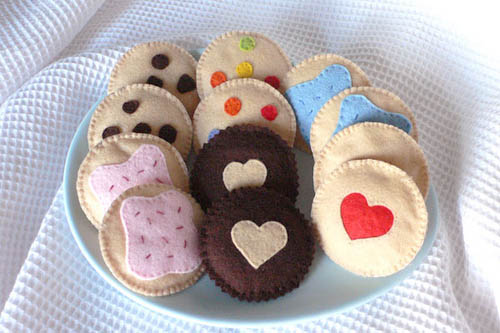
Vegan crafting is sort of a tricky subject. While a lot of folks equate veganism with environmentalism, the two don’t necessarily go hand in hand. I do believe, though, that the mindset that goes along with veganism can help you make greener choices in your crafting.
What Does Vegan Mean Anyway?
Veganism is about more than diet. It’s about making compassionate lifestyle choices and saying no to animal cruelty. That means cutting the animal products out of your day to day, not just getting them off of your dinner plate.
It’s that mindfulness that I think makes many vegan crafters also think a lot about the environment. If you care about animals enough to change your diet and lifestyle, chances are you’re taking a look at other ways your choices impact the planet.
Not everyone goes vegan for environmental reasons, and not all vegan options are necessarily eco-friendly. For the vegan green crafter, it’s important that we choose not only cruelty-free supplies but ones with a lower impact on the planet.
Vegan Craft Supplies
Fabric is a great example of the vegan green crafty dilemma. Some products, like felt, are a no-brainer. Wool felt is a no-no, but recycled felt is a great eco-friendly vegan option. When it comes to something like leather, though, things get more complicated.
Leather is not vegan, but vinyl is a petroleum product. What’s a green crafter to do? In my case, I just skip both and opt for designs that don’t call for leather or plastic leather substitutes. Notions can be tricky, as well. You might not think twice about something like shell buttons, but real shell is an animal product.
Along with animal products, vegans don’t use products that contain animal by-products or those that were tested on animals. Paints, clay, and glue for example, can contain animal by-products, and it takes a bit of digging to find brands that are vegan friendly. Over at All Those Things, Hazel has a nice, ongoing roundup of some vegan art and craft supplies.
I think the key to finding vegan supplies that are also eco-friendly is careful label-reading and also a bit of research. If you’re not sure what’s in a product, it’s worth reaching out to the company to ask. Not only will that help you make an informed purchase, it lets the company know that its customers value eco-friendly, vegan products!
Vegan Crafting Made Easy
Since publishing this article in March 2011, we’ve added some vegan crafting resources to our archives. They felt so relevant to this piece, that I wanted to list them here:
- Vegan Sewing Supplies
- Vegan Soap-Making
- Making Vegan Jewelry
- Knit and Crochet
- A Vegan Beeswax Alternative
- Reader Question: Vegan Wood Waxes?
I’ve love to hear from some of the other vegan crafters out there! How do you keep it green while making sure your crafts are cruelty free?
[Image Credit: Creative Commons photo by Melanie Hughes]

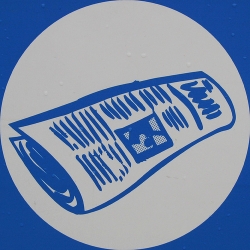
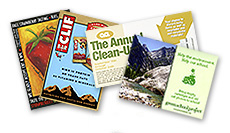
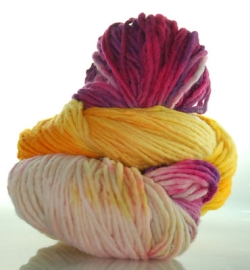
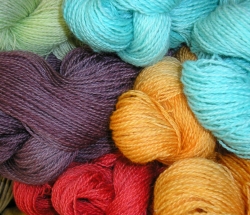
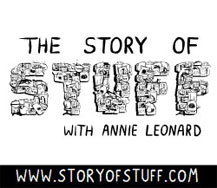
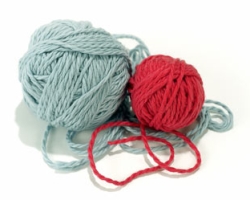
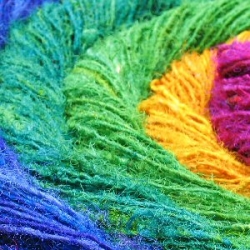
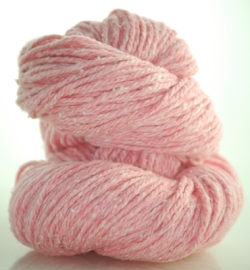
I’m two years into a vegan lifestyle, and I’m often overwhelmed by the choices and decisions. I’ve gotten the eating part down pretty well, but I don’t have any good resources regarding crafting. The leather / vinyl dilemma has me flummoxed! I’d love to see more posts here regarding vegan crafting.
I’ll definitely brainstorm some more vegan topics. And congratulations on two years of veganism! Sometimes it’s a bit like a puzzle, but it feels good to live cruelty-free.
I’ve been vegan for 12 years, and after you’ve been vegan that long you stop craving things you can’t eat or use. I literally can’t think of a project where I’d want to use either leather or vinyl. Okay well if I think about it I guess I can…
I disagree with the strict “no-animal products” rule opting for a “no animals hurt in the process” rule. Shells and feathers are vegan as long as they were found, which usually excludes store bought items. Wool is vegan when sheep are treated well. I do draw the line at slaughter by-product. While chickens aren’t slaughtered _for_ their feathers, the chicken-farmers have a larger profit margin when they sell the feathers. Used leather or silk would also be vegan by my definition, but I’ve found I’ve developed a certain distaste for the way they feel 😛
I also make allowances for thrift-store items since the animal industry doesn’t profit (and therefore such purchases don’t encourage/enable further harm to animals). Smart Monkey Yarn on Etsy is a great source of wool yarn–she unravels old sweaters.
On a side note, leather isn’t really an environmentally sound option. It takes more energy/water/resources to produce animal skin than plant fibers. And if nothing else, leather is heavily treated with chemicals. (But than again convential cotton is heavily on the pesticides…)
That’s an interesting take, Esther! It’s good to hear from a vegan who’s flexible. I am OK with leather if it’s second hand, since it’s keeping that item out of the landfill, and I can’t control the harm that was already done. I hadn’t thought about shell in that way, but that makes sense. Thanks for sharing your thoughts!
Aren’t humans amazing? They kill wildlife – birds, deer, all kinds of cats, coyotes, beavers, groundhogs, mice and foxes by the million in order to protect their domestic animals and their feed.
Then they kill domestic animals by the billion and eat them. This in turn kills people by the million, because eating all those animals leads to degenerative – and fatal – health conditions like heart disease, stroke, kidney disease, and cancer.
So then humans spend billions of dollars torturing and killing millions more animals to look for cures for these diseases.
Elsewhere, millions of other human beings are being killed by hunger and malnutrition because food they could eat is being used to fatten domestic animals.
Meanwhile, few people recognize the absurdity of humans, who kill so easily and violently, and then call for Peace on Earth.
~Revised Preface to Old MacDonald’s Factory Farm by C. David Coates~
_____________
Anyone can break this cycle of violence! Everyone has the power to choose compassion! Please visit these websites to align your core values with life affirming choices: http://veganvideo.org & http://tryveg.com
“Any great change must expect opposition because it shakes the very foundation of privilege.”
Lucretia Coffin Mott, 1793-1880, minister, women’s rights leader, abolitionist, peace activist, humanitarian
I was so thrilled to see the title of this post pop up in my feed reader! I cannot express how thankful I am that you wrote this. First, I am so happy that you clarified what being vegan means. It frustrates me to hear people associate vegan with environmental or health reasons. While I absolutely enjoy those benefits, veganism is an ethical lifestyle choice.
As a new-ish vegan and new crafter I am constantly struggling to find quality, eco-friendly, vegan supplies. It is harder than I imagined! Thank you for providing this information to everyone.
Thanks so much for your comment! I’m always hesitant to talk about veganism, because I know it’s a touchy subject for a lot of people. I’m glad that you found it useful!
I like using natural materials for my crafts.
Love being green….. were antique so thats also being green by not using any more of the earth than we have to!
See, I see hypocrisy in being vegan but not caring about the environment, i’m a vegan who puts the environment FIRST period, the environment provides for us and animals. Environmentalism is also an ethical lifestyle choice, I don’t make things I don’t use, I don’t buy things that aren’t necessary and I don’t sell things i know aren’t necessary for the environment or mankind, I also don’t waste. Sorry to rant a hundred years later, but I hate that my fellow vegans denounce environmentalism.
I would like to mention that our company Colors of Nature makes a vegan watercolor paint that is cruelty-free and earth-friendly in response to concerns such as these. We will soon have an oil paint line as well. There are no animal products in our paint and we use all natural ingredients. If you are interested in learning more about our line of watercolor paints please let me know.